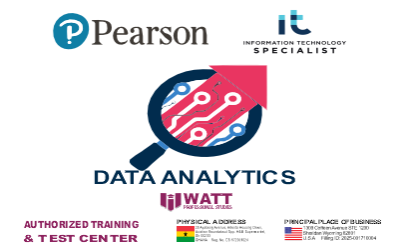Compare with 1 course
DATA ANALYTICS ITS PEARSON CERTIFICATION

GH₵2500
GH₵3500
Candidates for this exam are seeking to prove introductory knowledge of how to responsibly manipulate, analyze, and communicate findings of data analysis. Candidates should have at least 150 hours of instruction or hands-on experience with data manipulation, analysis, visualization, and communication. They should be familiar with general data concepts, data-related laws, and responsible analytics practices.
Learn more
 1
1 